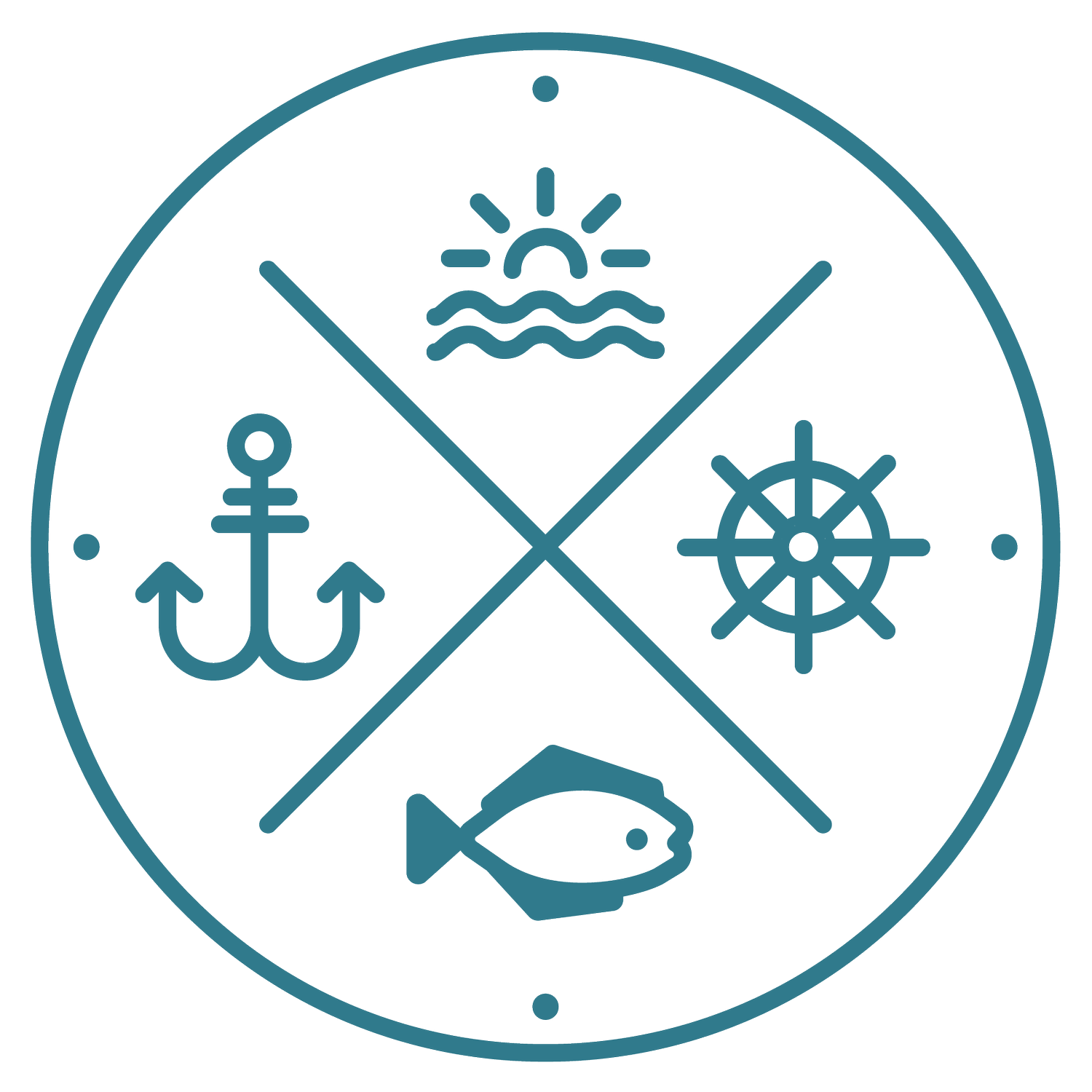The S.S. American Mariner
The C4-S-1a
In the 1950s, the US Maritime Administration commissioned several classes of single-screw break bulk cargo vessels. The SS American Mariner, technically a C4-S-1a vessel, is used in US Coast Guard examinations as the platform for various stability calculations. Originally these questions only appeared on Unlimited Master AGT and Unlimited Chief Mate AGT exams. Now they can be found on exams for Masters 500/1600 NC/Oceans, and Mates 500/1600/AGT NC and Oceans as well. On the Masters/Chief Mate examinations there is a stand-alone Stability examination.
While these vessels are no longer in operation, the stability concepts and calculations remain relevant.
There are several varieties of practical stability calculations specifically designed for “The American Mariner” (also known as “The American Ranger”) in licensing examinations. The White Pages of the brown “Stability Data Reference Book” comprise the “Trim and Stability Booklet for the Single-Screw Cargo Vessel ‘SS American Mariner.’” Candidates will make extensive use of these tables.
In all, there are eleven types of problems based on the “American Mariner.” We will go through the solutions of each type, step-by-step.
Trim and Stability Data Reference Book:
Table of Corrections in Inches to Forward and Aft Drafts: Sheet 2
Table of Free Surface Corrections and Tank Properties: Sheet 4
Final KG of the Vessel after Loading:
Solving for KG
The calculation of the Center of Gravity uses the “moment,” the product of a quantity (such as a force) and its distance to a particular axis or point. In transverse stability the moment is the product of a weight and its distance from a reference point such as the deck or the keel.
Moment = weight x distance
The first type of problem here determines the location of the center of gravity of the SS American Mariner above the keel after loading cargo.
Statement of Problem:
The SS AMERICAN MARINER is ready to load the cargo listed. There are already 4236 tons of cargo on board with a KG of 27.2 feet. Use the white pages of the Stability Data Reference Book to determine the final KG of all the cargo after loading is completed.
| Cargo Location | Weight (in Tons) of Cargo |
|---|---|
| No. 1 Second Deck | 80 |
| No. 1 Third Deck | 75 |
| No. 2 Third Deck | 60 |
| No. 2 Tank Top | 94 |
| No. 3 Second Deck | 101 |
| No. 3 Tank Top | 57 |
| No. 4 Third Deck | 75 |
| No. 4 Tank Top | 83 |
| No. 5 Tank Top | 90 |
| No. 5 26'6" Flat (Reefer) | 30 |
| No. 5 Third Deck Reefer | 30 |
A. KG 26.9 feet
B. KG 27.3 feet
C. KG 27.8 feet
D. KG 28.1 feet
Step 1:
Use Sheet 7 of the white pages to find the KG of each of the additional dry cargoes. Find the total moments of cargo already on board and add to these the total weights and moments of the cargoes added.
| Cargo Location | Weight (in Tons) of Cargo | x KG | Moment |
|---|---|---|---|
| Unloaded Vessel | 4236 | 27.2 | 115219.2 ft/tons |
| No. 1 Second Deck | 80 | 45.2 | 3616.0 ft/tons |
| No. 1 Third Deck | 75 | 31.9 | 2392.5 ft/tons |
| No. 2 Third Deck | 60 | 29.1 | 1746.0 ft/tons |
| No. 2 Tank Top | 94 | 13.1 | 1231.4 ft/tons |
| No. 3 Second Deck | 101 | 41.3 | 4171.3 ft/tons |
| No. 3 Tank Top | 57 | 12.7 | 723.9 ft/tons |
| No. 4 Third Deck | 75 | 27.7 | 2077.5 ft/tons |
| No. 4 Tank Top | 83 | 12.5 | 1037.5 ft/tons |
| No. 5 Tank Top | 90 | 10. | 981 ft/tons |
| No. 5 26'6" Flat (Reefer) | 30 | 30. | 921 ft/tons |
| No. 5 Third Deck Reefer | 30 | 21.8 | 654.0 ft/tons |
| Totals | 5011 Tons | 134771.3 ft/tons |
Step 2:
Divide the total moments by the weight to find the new KG. In this case, 13477.13 ft/tons divided by 5011 tons gives a KG of 26.89 feet. The closest answer is (A).
Finding the KG of the Liquid Load
Solving for KG of Liquid Load
Statement of Problem:
The SS AMERICAN MARINER has the liquid loading indicated below. Use the white pages of the Stability Data Reference Book to determine the KG of the liquid load. [Note: this is not the KG of the loaded vessel, only the KG of the liquid load.]
| Hold | Tons | Hold | Tons |
|---|---|---|---|
| DB 2 P | 71.2 | DB 5 CL | 196.2 |
| DB 2 S | 71.2 | DB 5 P | 178.0 |
| DB 3 CL | 220.0 | DB 5 S | 180.0 |
| DB 3 P | 55.6 | DB 6 CL | 242.3 |
| DB 3 S | 55.6 | DB 6 P | 87.0 |
| DB 4 CL | 224.1 | DB 6 S | 87.0 |
| DB 4 P | 128.1 | DB 7 P | 94.6 |
| DB 4 S | 128.1 | DB 7 S | 94.6 |
| DT 4 P/S | 110.0 | DT 5 P/S | 108.4 |
A. 2.6 feet
B. 2.8 feet
C. 3.1 feet
D. 4.3 feet
Step 1:
Using Sheet 7 of the white pages, find the KG for each of the liquid cargoes. Find the moments for each of these cargoes. Total the moments and the weights. Note that Deep Tanks 4 P/S and 5 P/S are each entered as a single tank. The operation is performed only once.
| Cargo Location | Weight (in Tons) of Cargo | x Center of Gravity | Moment |
|---|---|---|---|
| DB 2 P | 71.2 | 2.7 | 192.24 ft/tons |
| DB 2 S | 71.2 | 2.7 | 192.24 ft/tons |
| DB 3 CL | 220.0 | 2.5 | 550.0 ft/tons |
| DB 3 P | 55.6 | 3.0 | 166.8 ft/tons |
| DB 3 S | 55.6 | 3.0 | 166.8 ft/tons |
| DB 4 CL | 224.1 | 2.5 | 560.25 ft/tons |
| DB 4 P | 128.1 | 2.6 | 333.06 ft/tons |
| DB 4 S | 128.1 | 2.6 | 333.06 ft/tons |
| DT 4 P/S | 110.0 | 21.3 | 2343.0 ft/tons |
| DT 5 P/S | 108. | 20.9 | 2265.56 ft/tons |
| DB 5 CL | 196.2 | 2.5 | 490.5 ft/tons |
| DB 5 P | 178.0 | 2.6 | 462.80 ft/tons |
| DB 5 S | 180.0 | 2.6 | 468.0 ft/tons |
| DB 6 CL | 242.3 | 2.5 | 605.75 ft/tons |
| DB 6 P | 87.0 | 2.8 | 243.60 ft/tons |
| DB 6 S | 87.0 | 2.8 | 243.60 ft/tons |
| DB 7 P | 94.6 | 2.7 | 255.42 ft/tons |
| DB 7 S | 94.6 | 2.7 | 255.42 ft/tons |
| Totals | 2332.0 | 10128.1 ft/tons |
Divide the total moments of the liquid load cargoes by their total weight. The result is the KG of the liquid load. 10128.10 ft/tons divided by 2332.0 tons, yields a KG of 4.3 feet, which is answer (D).


